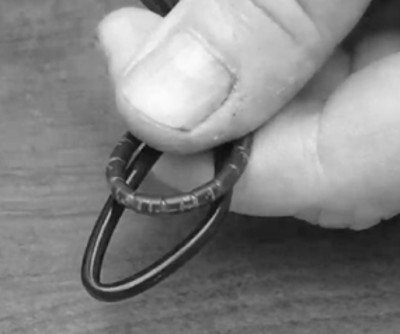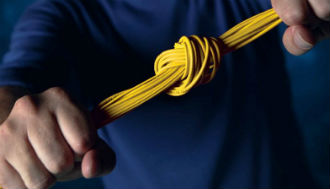Can ordinary fiber optic cables be bent?
One of the most common concerns amongst the installation of fiber cables is related to the possibility of bending a fiber cable or not. Worrying about this issue comes off rather naturally: if one does bend a fiber cable, let’s say around a corner, would that harm the cable? Or even more importantly, would it affect the quality of the transmission?


I’m sorry to share this news, but the answer is... yes. However, you do not need to let this concern grow out of proportion. You just need to take under consideration the following bits of information we’re about to show you, and you will be able to get over any issue you may have in regards to the bending -or not- of your fiber cables.
Under ideal conditions, there should be no loss of light within the fiber cable, which is one of the greatest features of fiber cables in the first place. Nonetheless, the scenario surrounding our actual installations are very far from that dreamy or utopian setting.
Depending on the way we install our systems, from the way we configure the connections through the actual alignment of cables, the inevitable losses of operating within the real world can be reduced or increased -and in this gap, it’s exactly where your control plays an essential role!
That control should be based on solid information. That being said, you should be aware of a parameter called “Bend Radius”, which is the minimum radius a cable can be bent without suffering any sort of damage. In other words, the smaller the bend radius, the larger the flexibility of the cable. Some manufacturers indicate the Bend Radius of fiber cables (Beyondtech surely does, is in its packaging and in their datasheets), but if you don’t have that information, you should know that the typical Bend Radius for fiber patch cables is around 30 mm.

Remember that you should be able to take any action that reduces those inevitable losses, that’s why it’s so important that you know this factor: bend loss starts happening only when the fiber cable is being bent at a higher measure than the cable's maximum bend tolerance.
When installing your systems, you also need to be careful that the jackets have not only been perfectly built but that they’re also perfectly connected, since flaws in either one of these instances will result in losses in dB across time.
Another factor you need to take into consideration is pressure: if you tight your cables one against the other too tightly, that excess will generate leaks in the long term. Another eventuality you must avoid is when you have heavy objects pressed against the cables, just because that will definitely provoke an increase in losses. (This of course only applies to indoor cables)
As the supervisor of your network, you should develop the habit of constantly taking a thorough look at your installations: sometimes objects move after unforeseeable displacements, or get bigger thanks to high temperatures, so that object that originally didn’t disturb the rest of your installation may actually do it after a while.
Long story short: it is OK to bend your fiber cable, but you just need to be careful. You now know some facts that can lead you to properly design and implement strategies to reduce the losses that will inevitably come your way when using your fiber cables for installing your networks.



